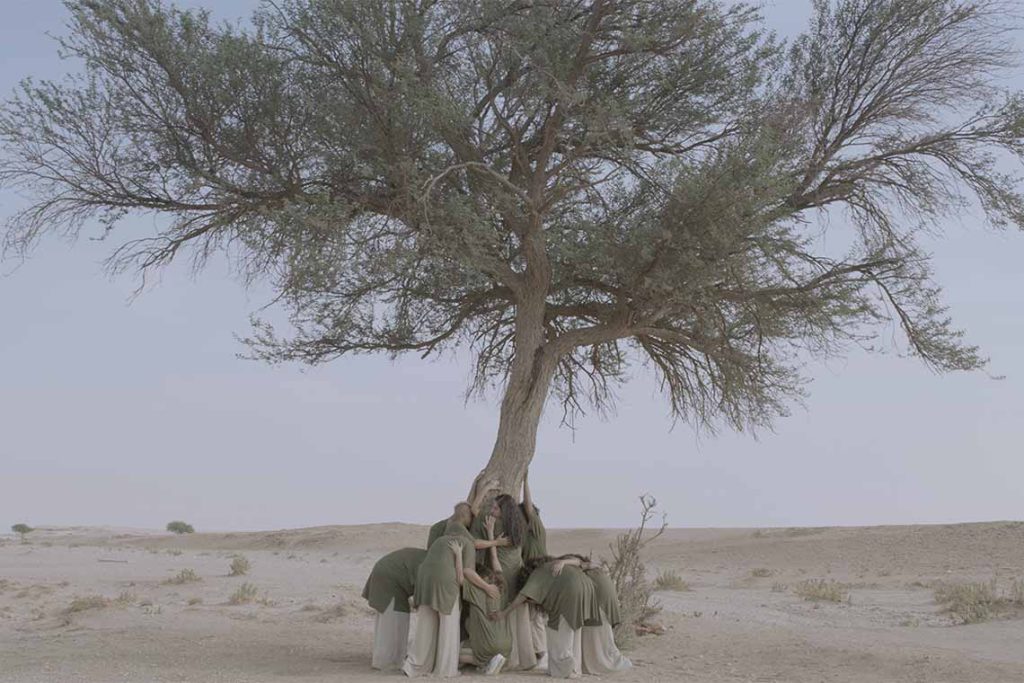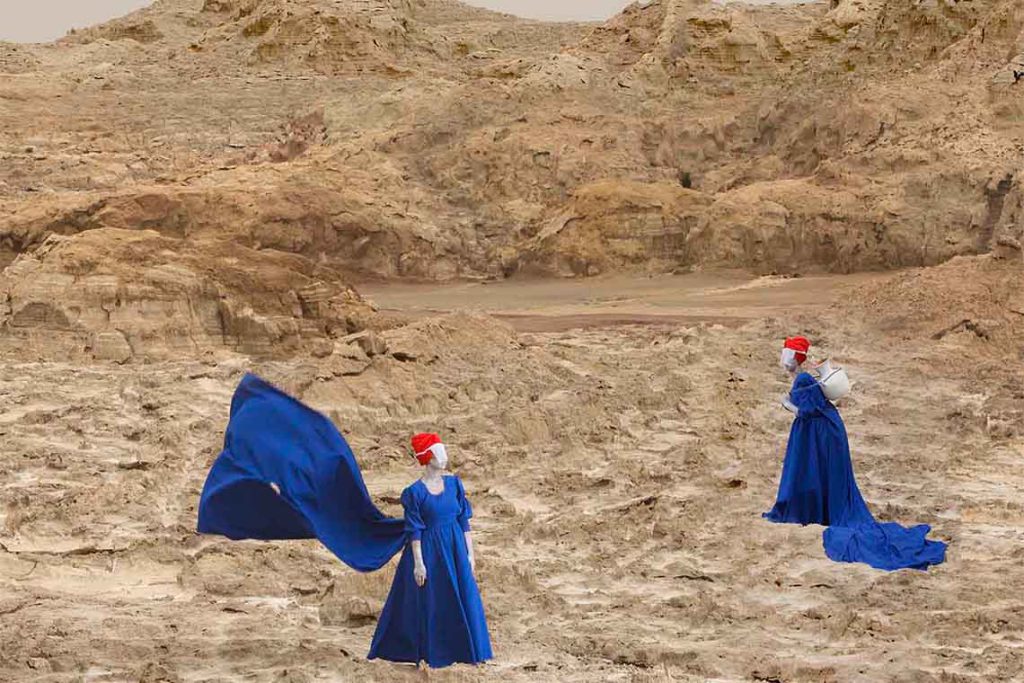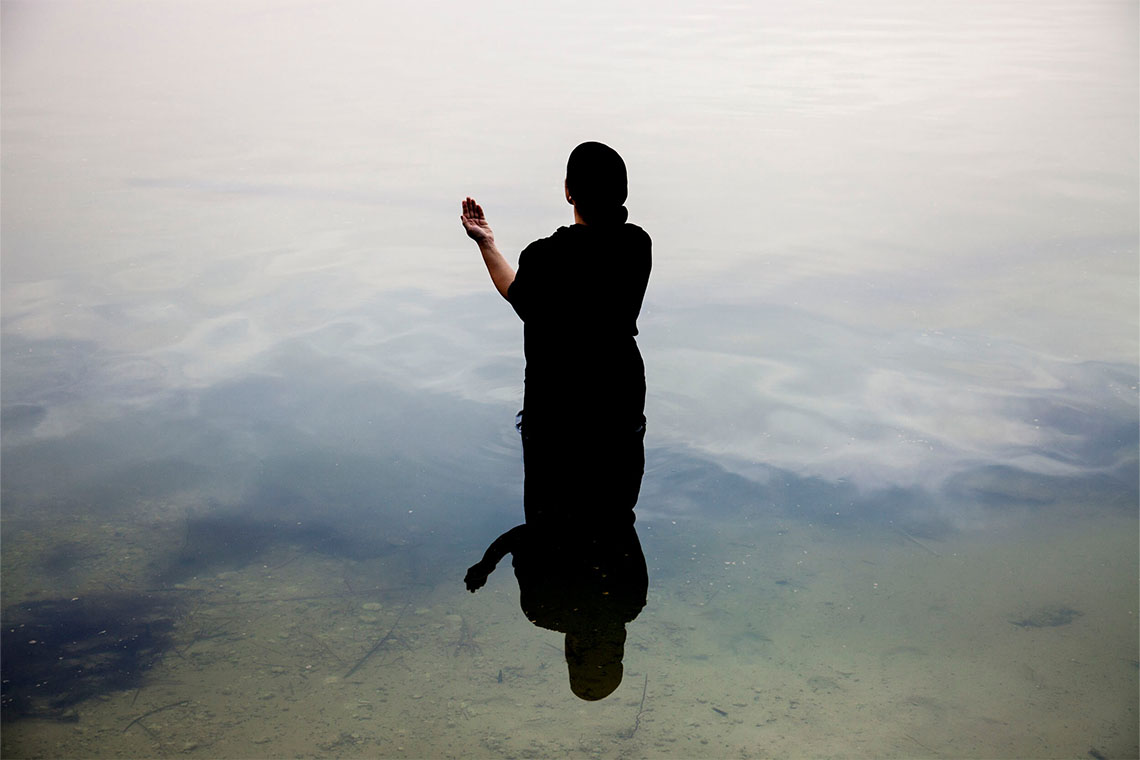Resonating Tides, an exhibition of 11 female artists curated by Janet Bellotto, opens the floor for discussion on climate action through art.
Launched during COP28, Resonating Tides extends the summit’s discussions around climate action to the realm of culture. Curated by artist and writer Janet Bellotto, the exhibition examines the ways in which water connects us with each other and with Earth. Within the Women’s Pavilion in Dubai’s Expo City, Bellotto brings together a selection of woman-authored works that resonate with this concept through explorations of water, the environment, womanhood and the inextricable ties that bind them.
The exhibition creates a fluid conversation between works that engage individually with these disparate thematic threads. Marwah AlMugait’s video installation I Lived Once (2020), for instance, comments on the interdependence between humans and the environment through a moving performance choreographed to mimic the self-defence mechanism of the Mimosa peduca plant, also known as the “touch-me-not”. The work equates human life and nature, with the performers standing in for the plant and with the viewer also taking part in the dance as the camera weaves between their bodies. Bahraini artist Ghada Khunji offers an analogy between femaleness and nature with Kãf-Ha-Ya-‘Aĩn- Ṣãd (2020), consisting of a bisht or traditional cloak adorned with 2200 sun-cured date seeds. The work’s title references a chapter from the Qur’an in which Allah relieves Maryam from the pains of childbirth with dates, signalling the artist’s perspective of the palm tree as a symbol of fertility.

A standout work is Sama Alshaibi’s Silsila (2014), which highlights the disruption of the relationship between humanity and nature as a result of human action. Part of a multi-media project with the same title, the photograph depicts a female figure emerging from the sea, her back to us and her hands raised as if in supplication. The series follows the artist on her travels across various bodies of water located along the route taken by 14th-century explorer Ibn Battuta, where communities face threats caused by climate change, whether drought, displacement or limited access to water due to hydro-political conflict. Silsila – Arabic for ‘chain’ or ‘link’ – demonstrates literally how water connects us. “The climate disasters of tomorrow do not stop at borders. They move, they cross over, the problems move and cross over with them,” says the artist.
Three works from Alshaibi’s series Carry Over (2019), also featured in Resonating Tides, evoke the effects of water-related climate issues on women. Showing female figures balancing water vessels on their heads, the project echoes and challenges stereotypical Orientalist portraits of Arab women that depicted them as subjugated. For the artist, the works instead embody the strength and power of women responsible for collecting a resource fundamental to life. While Carry Over is concerned primarily with questions of representation, juxtaposed with Silsila and the exhibition’s other works, it speaks to the incongruous impact of climate change on young women in low-income societies, who often have to leave school to help secure and transport water during periods of drought or erratic rainfall. Aïda Muluneh’s Water Life (2018) explores the same line of questioning through editorial-style photographs of women in bright dresses carrying jugs through the barren landscape of Dallol, Ethiopia, one of the hottest and driest places on Earth.

On the subject of the enduring strength of women, Magda Malkoun presents an NFT entitled Hope (2021–22), an animated portrait of a woman consisting of fragmented photographs of objects that bear personal significance for the artist. The woman’s face is solemnly upturned, echoing the beseeching figure in Alshaibi’s Silsila, her hair flowing like waves or ripples in water. “My work explores how women are at the frontlines of man-made and natural disasters, and have the power to reinvent themselves despite adversity and find solutions with limited resources,” Malkoun says. “While worthy of celebration, it’s important to remember that this resilience is often a form of survival mode and shouldn’t be the norm.”
A talk held on the exhibition’s opening night, featuring Malkoun, Khunji and textile artist Stephanie Neville, was centred around the potential of art to enact “culture-based climate action”. A question repeatedly posed by art critics, it is particularly pertinent in the context of COP28. On one hand, the activist capacity of art is dubious given its niche and often elite audience and the general lack of engagement with the potential beneficiaries of any supposed advocacy. The climate summit, however, is undoubtedly a space for action-oriented discussion, where the conversations that art is inherently capable of sparking just might, with the right people talking and listening, help germinate the seeds of social impact.



